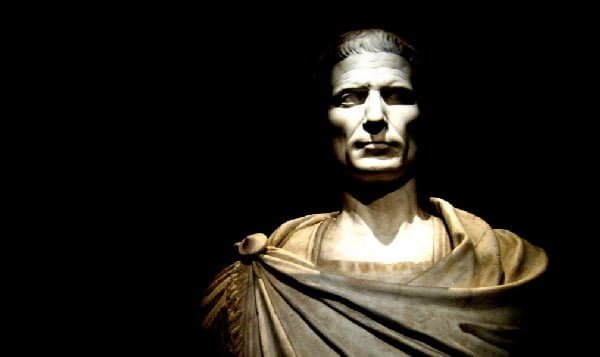Chapters
Pontifex Maximus (“High Priest”) was the highest priest in ancient Rome and the superior of the college of priests – pontiffs (Collegium Pontificum).
The origin of the name of this office is not entirely clear. It is generally accepted that the title Pontifex Maximus means “supreme bridge builder” (from the Latin pons and facere). Of less interest is the theory of the Etruscan origin of the title, which would then mean “preparing for the road” (from the Etruscan word pont meaning “road”). There is also a belief that the name comes from the word pompifex, which is the leader of public processions.
The period of the kingdom
According to ancient records, Rome owed the foundation of the college of pontiffs to the second king of Rome – Numa Pompilius. The priests in the college acted as advisers to the king (rex) on religious matters. The head of the office was the described pontifex maximus, who together with other priests sat on position for life.
We don’t have much information about the archaic times of Rome. It is suspected that all materials were lost due to the siege of Rome by the Gauls in 387 BCE. The earliest records of pontiffs come from the 1st century BCE. Titus Livius, a Roman historian, claims that Numa Pompilius was the first High Priest to appoint a certain Numa Marcius to whom he handed over his written religious ceremonies.
The period of the republic
After the overthrow of the monarchy at the end of the 6th century BCE. The Romans decided to appoint the “king of rituals” (rex sacrorum), whose task was to take care of the proper performance of ceremonies and to take care of the religious sphere of the country. The new office formally had the greatest scope of religious power. It should be noted, however, that the highest priest was deprived of military and political power, unlike the pontiffs.
The official seat of the High Priest was Domus Publica which was between the House of the Vestals and the Via Sacra, near Regia, on Forum Romanum. In practice, however, Pontifex Maximus resided and “managed” the Region.
By law, the High Priest could not wear a purple-edged toga (toga praetexta) if he was in the office of magistracy at the same time. What distinguished him was the hand-held iron sword (secespita) or patera and a characteristic cloak that also covered the head (capite velato).
In practice, Pontifex Maximus possessed both political and religious power. At the end of the republic’s existence, the office of the Supreme Priest was in the hands of the most influential Roman families. The person who held this office was held in high esteem and was able to use his religious power to influence the politics of the country.
Originally, the college of pontiffs had five members, including the High Priest. The new members were appointed for life by priests who already held the office, and they were chosen from among the most outstanding patrician families. About 299 BCE thanks to lex Ogulnia plebeians were also allowed to stand as candidates. According to historical sources, Tiberius Coruncanius became the first plebeian High Priest in 254 BCE.
Thanks to lex Ogulnia, the number of priests has been increased to nine. In 104 BCE, by means of lex Domitia, it was established that new priests to the college would be appointed by comitia tributa. The previous law was restored by Sulla in 81 BCE under the lex Cornelia de Sacerdotiis. Under his dictatorships, the number of pontiffs was increased to fifteen, and on his orders, Quintus Caecilius Metellus Pius was elected the new High Priest. It was the only time when priests did not decide on the choice of their “superior”.
In 63 BCE Sulla’s law was replaced with a modified version of lex Domitia restoring the prerogatives of comitia tributa. Under it, the Roman people recognized Julius Caesar as High Priest.. Under Caesar’s later dictatorship, the number of pontiffs increased to sixteen.
Features
The Pontiffs were tasked with providing “divine peace” (pax deorum). Major religious decisions were left to Pontifex Maximus who was supported by the Pontiffs as an advisory body.
In addition to religious functions, the college guarded the state archives, the documentation of the Republic of Poland, the list of public holidays and the list of its own written decisions (commentarii). As you can see, the pontiffs played a largely archival role. Moreover, the priests took care of the Roman calendar.
According to the law, Pontifex Maximus could not leave Italy, which was not always the case. While in office, Italy was left, among others, by Publius Cornelius Scipio Nasica Serapio, Publius Licinius Crassus Dives Mucianus and Julius Caesar.
The period of the empire
After the death of Caesar in 44 BCE, the office of High Priest went to Marcus Aemilius Lepidus, who held it until 13 BCE. Then he took over for life Octavian Augustus, who began to appoint companions. From that moment on, it is believed that the emperors began to wield religious power in the state, and the rank of this position decreased significantly. From then on until the year 375 CE this title was worn by each subsequent emperor.
Emperors performed their sacred functions during numerous holidays. This title also indicated the emperor’s protective role in relation to all religions in the empire. The emperor was therefore able to establish priests and a calendar of holidays for all religions of the empire. Only in 375 CE after his accession to the throne, the Christian Emperor Gratian refused to accept the title of the High Priest and resigned from the functions connected with this office.
List of Pontifex Maximus |
Kingdom Period:
Republic Period:
|








